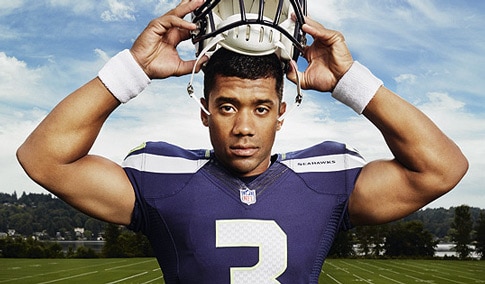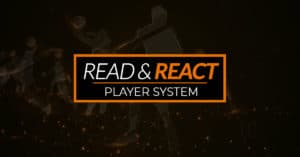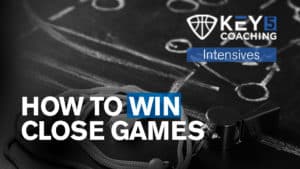Last season prior to Super Bowl XLIX, Inc. magazine sat down and talked with Russell Wilson’s trainer Jonathan Brooks. Brooks shared three traits that help make Wilson a poised, resilient performer under duress.
1. He practices the art of getting out of his comfort zone. “I was amazed by how quickly he adapts to the different environments that he’s put into,” says Brooks.
For example, anyone who has watched Wilson play knows he is quite comfortable using his speed to create operational space and improve throwing angles. Therefore, heading into last off-season, Wilson wanted to train for in-game moments when he could not use his foot speed to create angles and openings. In other words, he aimed to improve in situations where his mobility was limited or unavailable as a bailout mechanism.
Brooks would run a drill in which he had multiple balls of multiple colors thrown toward Wilson. While the balls were in the air, Brooks would shout out a particular color. It was the balls of this shouted-out color that Wilson had to catch. At varying intervals, Brooks shouted out different colors, forcing Wilson to hear-see-move at a moment’s notice.
2. He challenges himself and others to be at their best, even though it is technically off-season training. “He prepped for every day as if it was his game day,” says Brooks. “His approach was a lot different from what I’ve seen, based on his self-motivation and his leading others.”
Wilson led by example. He was the first one in the weight room each morning and the first one back from water breaks.
Once rapports and personalities were established, Wilson, like any leader with people skills, used more vocal encouragement with those whom he felt it would motivate. “He would speak with guys individually before a session started, and he would encourage them,” says Brooks.
He teaches without reprimanding or preaching.
3. He remains mindful that it is still the off-season, and that intense training must not lead to burnout. “He also works hard in the recovery state of things,” explains Brooks.
That is, on recovery days, Wilson would not slack off. He would diligently show up for massage treatments and therapy sessions. “He’d still treat it as a normal training day.”
Another component is sleep: between seven and nine hours a night, making sure to consume no food in the two or three hours before turning in.
It’s in categories like these–daily habits ensuring rest and reducing burnout–that the parallels between training athletes and training executives are most apparent.
For example, many entrepreneurs need to be reminded about the importance of time off. Left to their own devices, they’ll work long days and burn out, even though countless studies suggest they’ll be more effective if they sleep long hours and take regular vacations.
The key, as always, is to know the difference between working harder and working smarter. Of course, mastering that difference is one reason why entrepreneurs often work with coaches too.
[divider]








